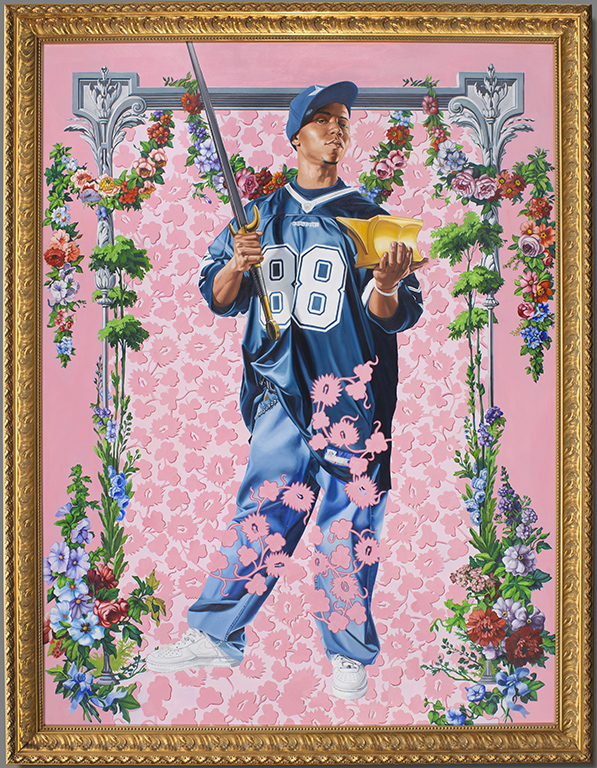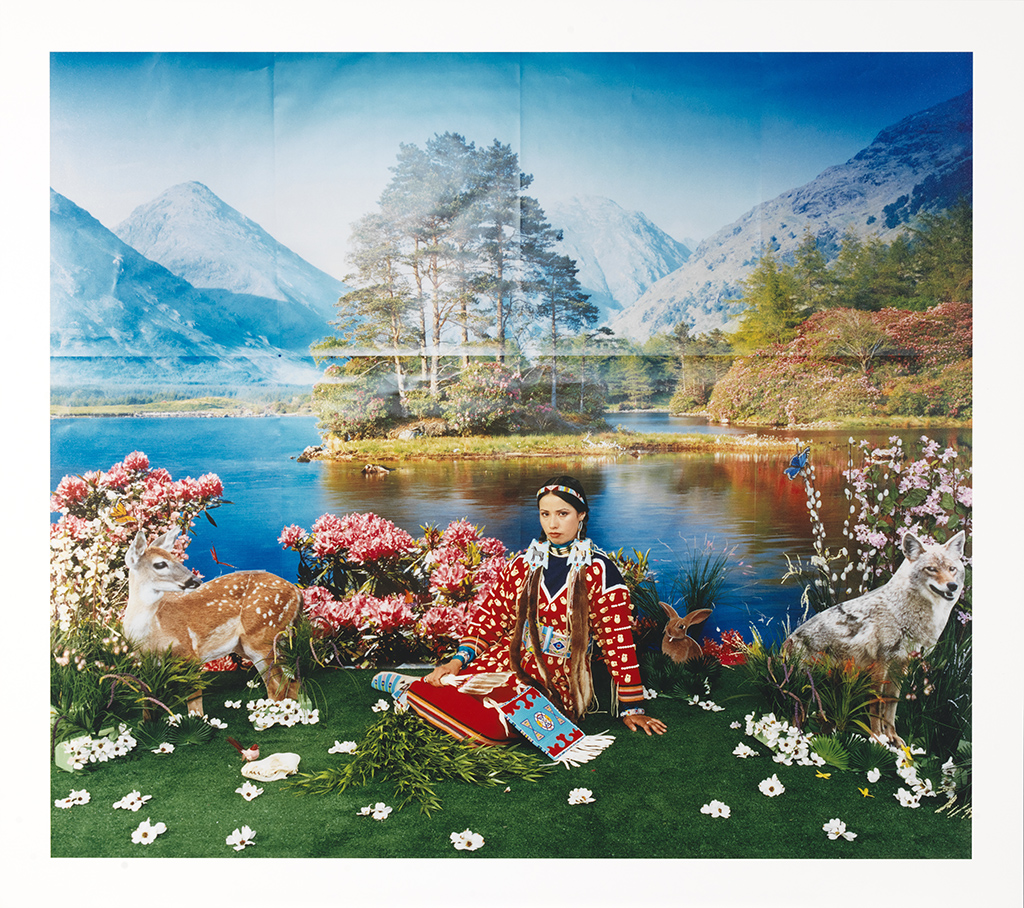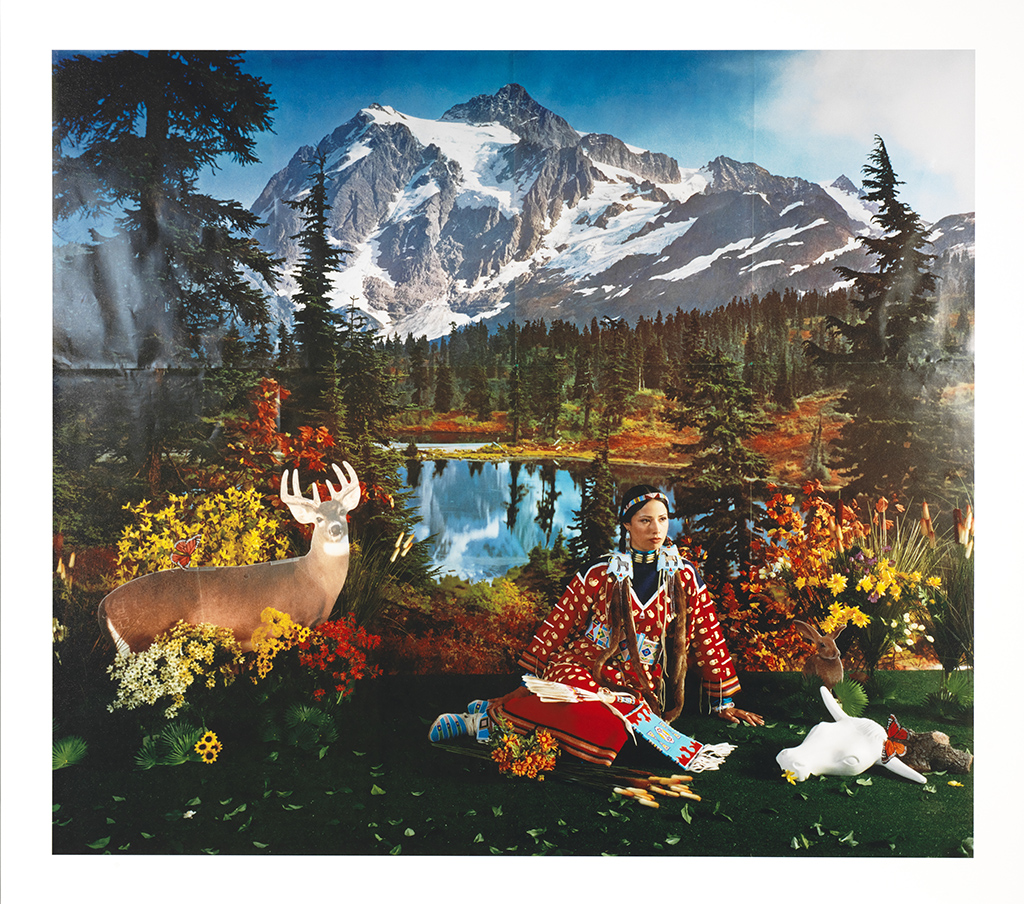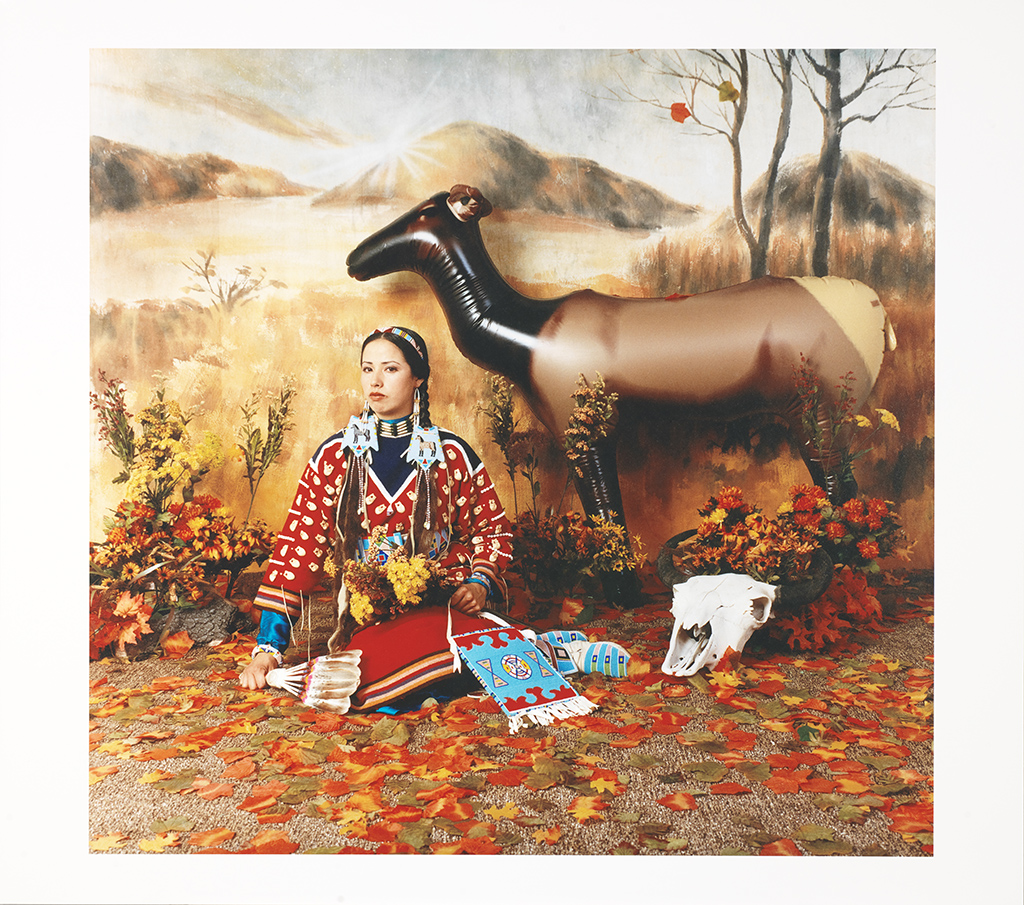Tour Overview
Outcomes
- Students will become familiar with the genre of portraiture and the choices artists make to convey information about a person.
- Students will consider the relationship between the artist and their subject (or sitter) and how the two can collaborate to different degrees to tell the subject’s story.
- Students will examine how portraits can celebrate people of different identities and challenge stereotypes or assumptions about individuals or groups.
Content
Part 1: Kehinde Wiley – Students will observe and analyze Kehinde Wiley’s Saint Adrian portrait and learn the elements of a portrait. They will also explore the importance of representation, learning about Wiley’s goals for his portraiture and his casting process.

Part 2: Class Choice – Guided by the elements of a portrait, students will analyze several portraits created by another artist. They will also discuss the artist’s message and the ability of portraits to express identity. If you would like to pre-select which portraits are discussed, please indicate your choice in the notes section of the request form.
Students will choose between:
- Wendy Red Star, Four Seasons Series 2015.33.1-4




- Joseph A. Newton, The Hues of Her Father’s Dreams. 2021. AC.25.

Curriculum
Visual Art:
- Perceive and analyze artistic work.
- Interpret intent and meaning in artistic work.
- Relate artistic ideas and works with societal, cultural, and historical context to deepen understanding.
History, Government, and Social Studies (KS):
- Investigate specific beliefs, contributions, ideas, and/ or diverse populations and connect those beliefs, contributions, ideas and/or diversity to contemporary issues.
- Investigate the relationship among people, places, ideas, and/or the environment and connect those relationships to contemporary issues.
Social Studies (MO):
- Analyze the preservation of cultural life, celebrations, traditions, and commemorations over time.
- Examine the changing roles among Native Americans, Immigrants, African Americans, women and others from 1800-2000.
- Select, analyze, and evaluate primary and secondary social studies sources with guidance and support.
Before Your Tour
Explore Your Own Identity
Help students to learn about the many different facets that make up our identities. Guide them in understanding their own identities using the lesson plan and identity charts from Facing History here.
Look Closely at a Portrait
Introduce students to the Western European tradition of portraiture which Kehinde Wiley references and remixes in his work. Practice “reading” a portrait using the elements of portraiture which students will be using during the tour. Use the questions below, adapted from the National Portrait Gallery, to guide your looking:
Introduce students to the Western European tradition of portraiture which Kehinde Wiley references and remixes in his work. Practice “reading” a portrait using the elements of portraiture which students will be using during the tour. Use the questions below, adapted from the National Portrait Gallery, to guide your looking:
- Facial expression: Use adjectives to describe the sitter’s facial expression. What emotion(s) does this expression convey?
- Pose: Describe the sitter’s pose. Is it natural and relaxed or formal and stiff? Invite students to imitate the pose of the person in the portrait. How does it make them feel?
- Clothing: What clothing is the sitter wearing? What might clothing tell us about the sitter’s profession, personality, social status, or place in history?
- Hairstyle: Describe the sitter’s hairstyle. Does it tell us anything about the sitter?
- Setting: What is the setting of the portrait? What might the setting tell us about the sitter? Consider if the setting is real or imagined.
- Objects: What objects are in the portrait? Objects function as symbols. What might they be telling us about the sitter?
- Color: What is color conveying in this image? How does color set the tone and mood of the portrait?
- Medium: What medium was used to create the portrait?
- Scale: What effect does the size of this portrait have on the way we view the sitter?
- Artistic style: How does this artist’s particular style tell us something about the sitter?
When you have discussed all the elements of portraiture, ask students: Based on everything you’ve noticed about the elements in this portrait, what story do you think you would tell about this person?
Suggested works:
- Augustus the Strong, Elector of Saxony and King of Poland, ca. 1714-1715
- John Singer Sargent, Mrs. Cecil Wade, 1886
View these and other works online at art.nelson-atkins.org.
After Your Tour
Learn More
Explore a virtual continuation of the Testimony: African American Artists Collective exhibition featuring additional artists from the Kansas City-based African American Artists Collective here.
Create a Self-Portrait
Use this lesson plan from Teaching Tolerance and the elements of portraiture discussed during the tour to guide students in making their own portraits. This activity builds on students’ understanding of portraits as a tool to challenge stereotypes about different identity group.
To help students explore their racial identities, consider the series of lessons “The Different Colors of Beauty” from Teaching Tolerance.
Curate an Identity Portraits Gallery
Invite students to choose another contemporary artist to research who also uses portraiture to highlight under-represented identities. Print out the portraits (or create a digital gallery on Padlet or Google Slides). Have students present on the artist they researched, or invite students to do a gallery walk and comment in writing on each portrait using some of the questions from the tour:
- What do you notice about this person?
- Consider the elements of portraiture. What would they say?
- How does this portrait challenge stereotypes?
For more resources and activities, please check out our Teacher Guide for Testimony: African American Artists Collective exhibition here.
Glossary
- Attribute: An object recognized as symbolic of a person and used in art to identify a saint or mythical figure
- Identity: The qualities, characteristics or beliefs that make a person who they are
- Race: One of the major groups into which human beings can be divided. As a social construction, it relates to the grouping of people based on shared physical characteristics, such as skin color
- Representation: The portrayal of someone in a particular way or as being of a certain nature
- Perspective: A way of looking at things
- Portrait: An image or picture of a person created by an artist
- Self-portrait: A picture of one’s self done by one’s self
- Sitter: The person or people who are in the portrait
- Stereotype: An oversimplified and/or unfair belief or idea that groups of people have particular characteristics or that all people in a group are the same
- Subject: The person in a portrait who is the focus of the portrait
- Symbol: An object or thing that represents or stands for something else, including an abstract idea